Abstract
Inactivation of airborne Venezuelan equine encephalitis (VEE) virus disseminated from liquid suspensions or from lyophilized preparations as 1- to 5-μm particles was investigated under various conditions of relative humidity and temperature in a 2,500-liter static aerosol chamber. Relative humidity ranging from 18 to 90% at 24 C and temperature ranging from −40 to 24 C had no marked effect on the biological decay rate or the recovery of viable airborne VEE virus disseminated from liquid suspensions. However, at 49 C a significant increase in the biological decay rate and decrease in aerosol recovery of the VEE virus were observed. Airborne lyophilized VEE virus was significantly affected by relative humidity. An increase in relative humidity from 20 to 90% resulted in progressive decrease in aerosol recovery of viable VEE virus. A twofold reduction in aerosol recovery of the lyophilized virus was observed at and above 29 C as compared to the lower temperatures studied. However, the differences among biological decay rates of lycphilized VEE virus were not significant within temperature range of −40 to 38 C.
Full text
PDF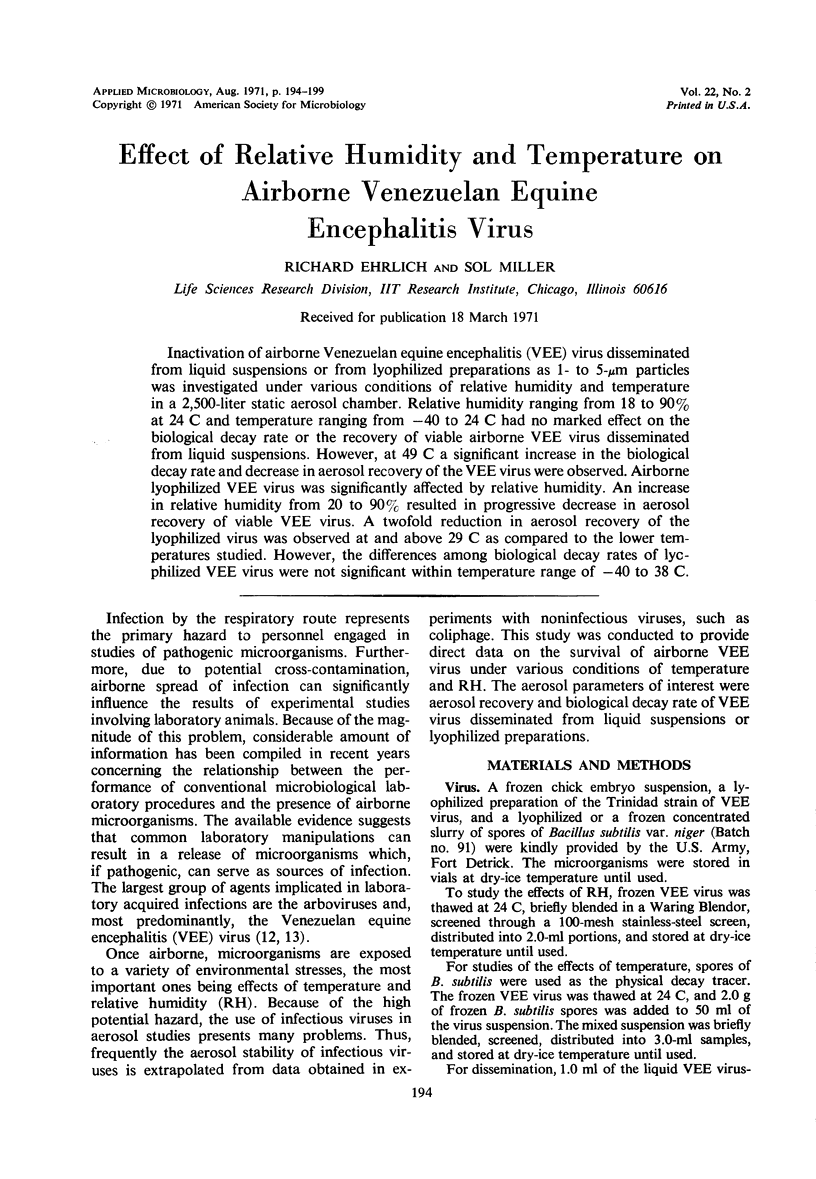
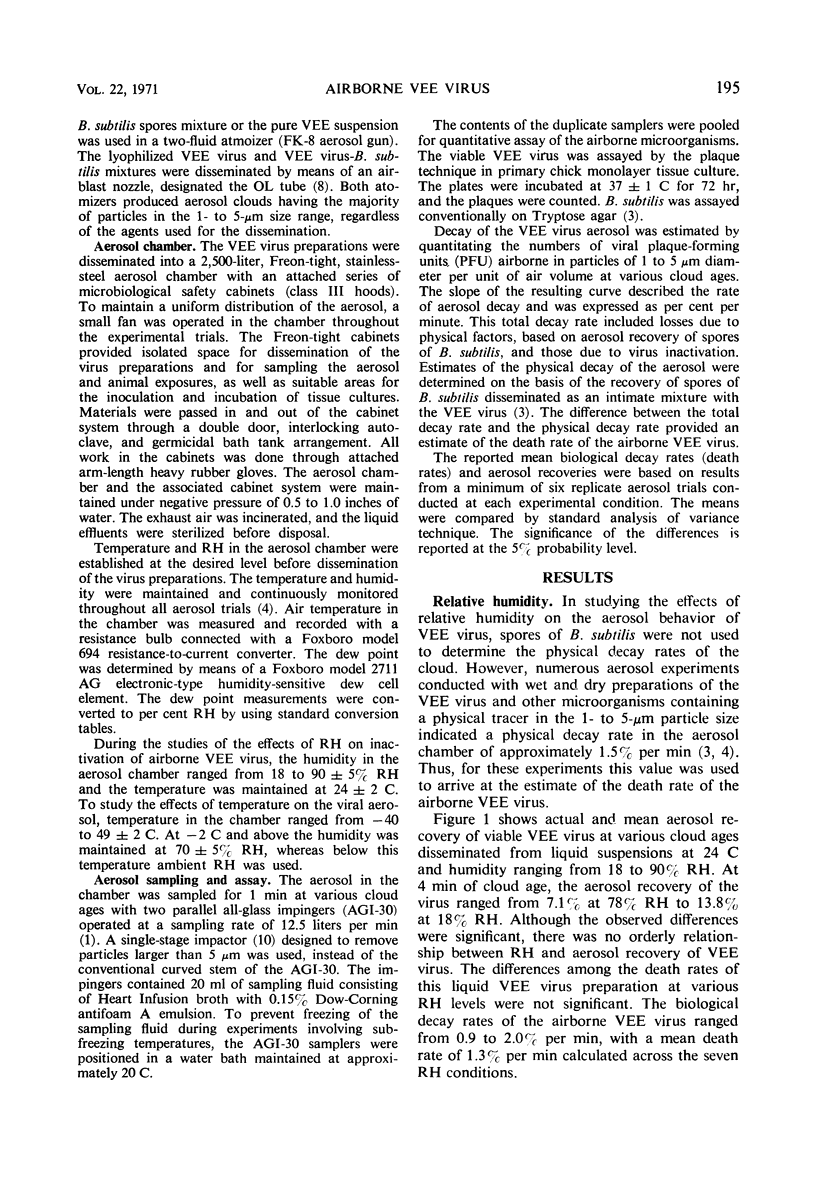
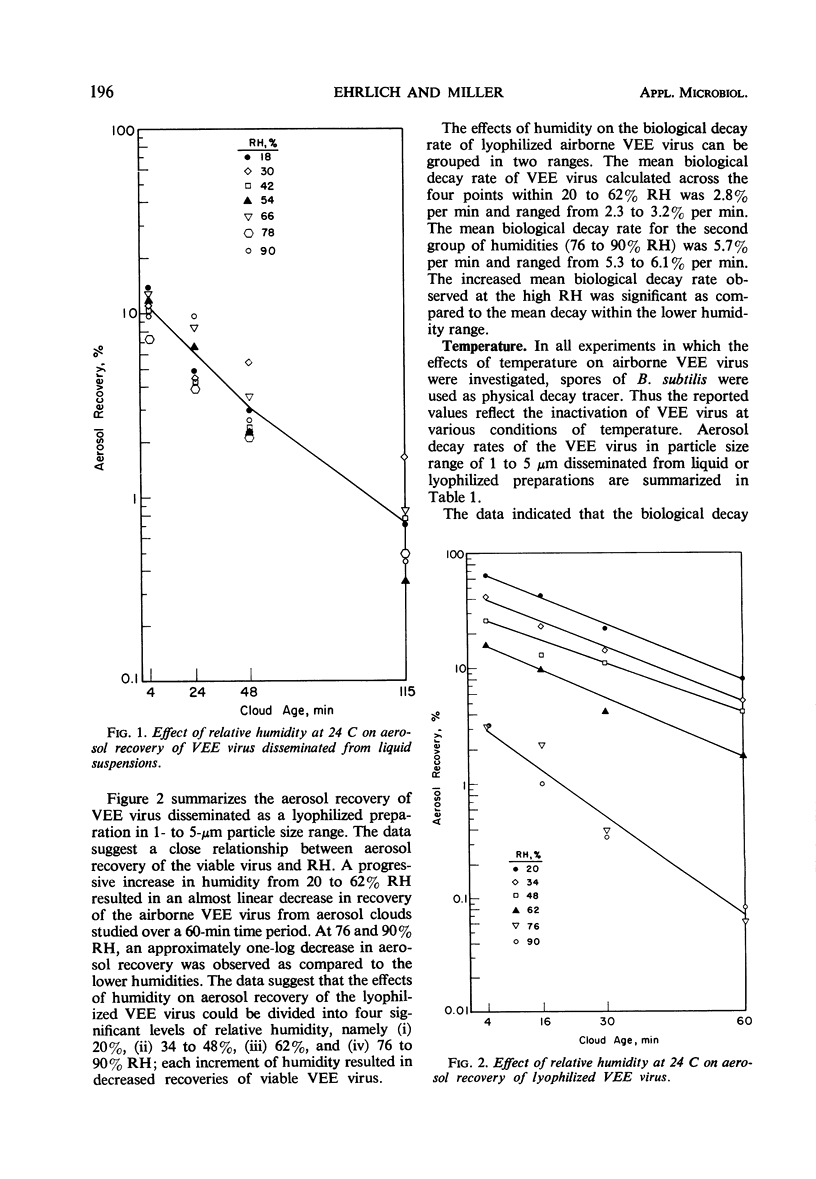
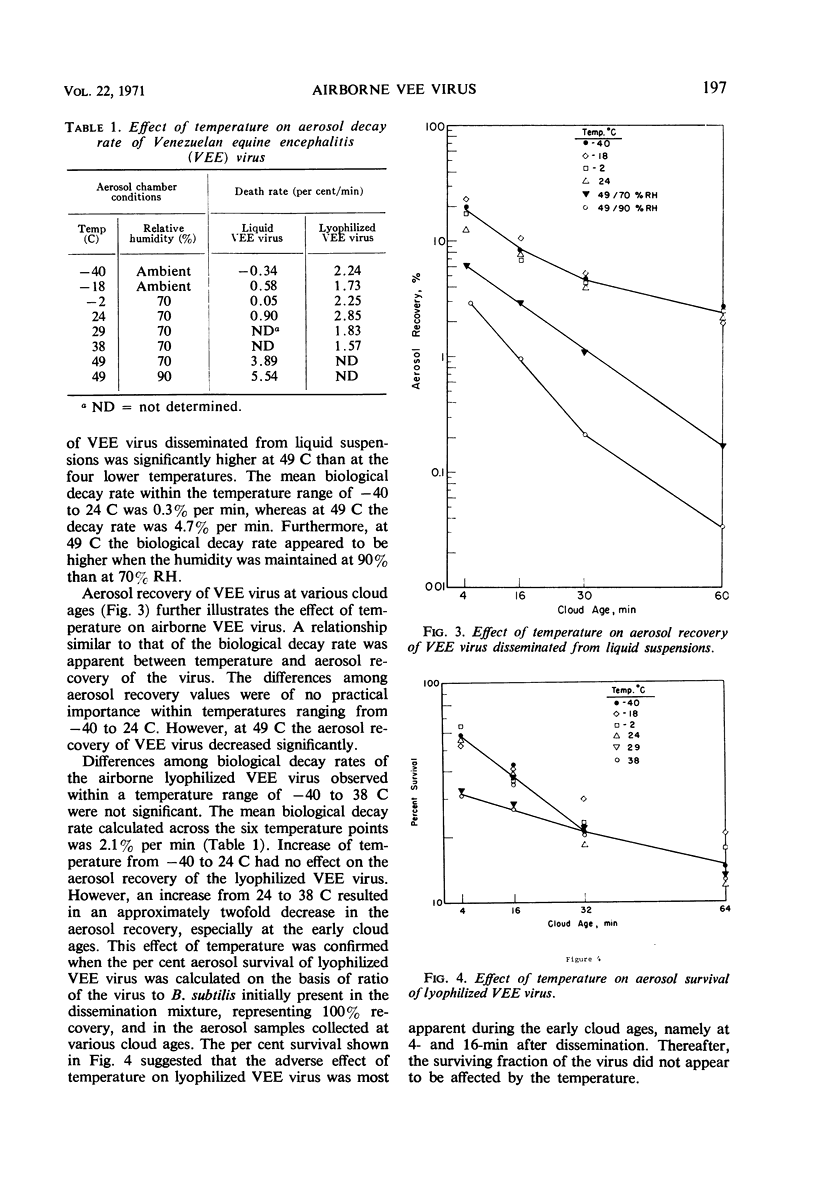
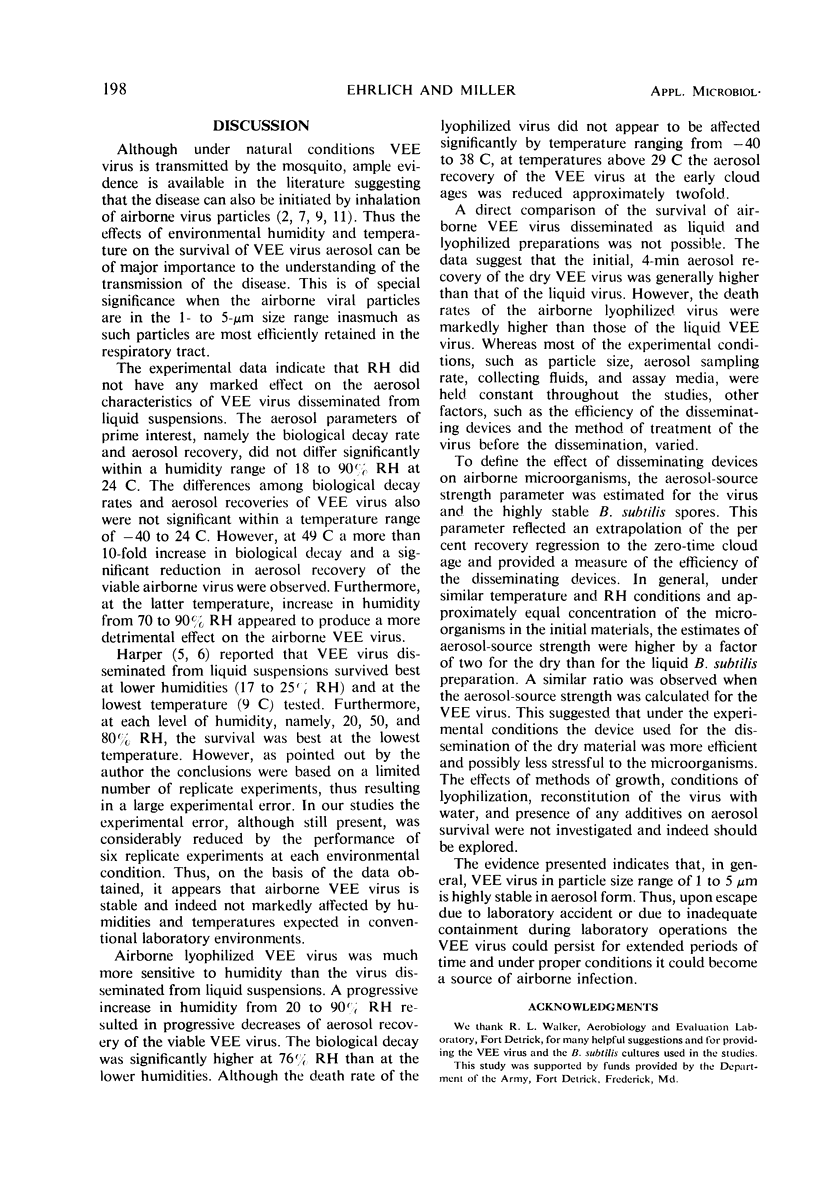
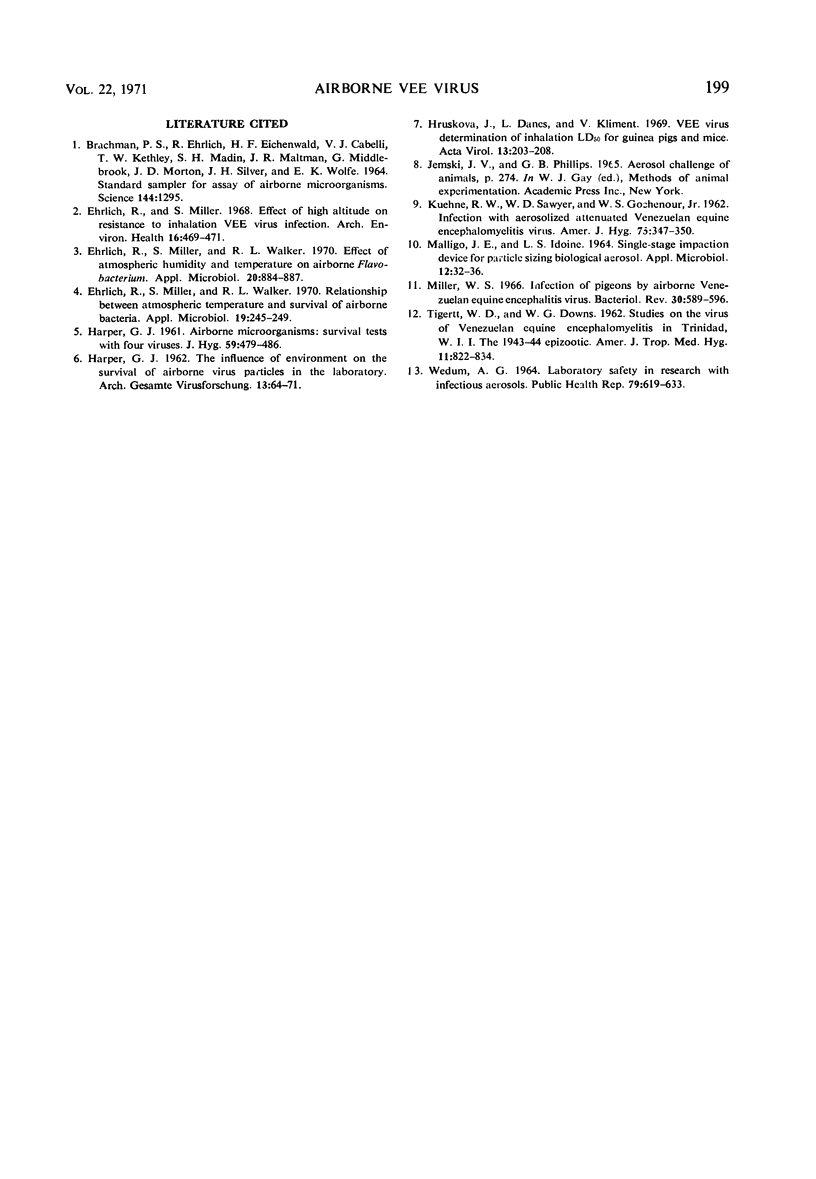
Selected References
These references are in PubMed. This may not be the complete list of references from this article.
- Ehrlich R., Miller S. Effect of high altitude on resistance to inhalation VEE virus infection. Arch Environ Health. 1968 Apr;16(4):469–471. doi: 10.1080/00039896.1968.10665091. [DOI] [PubMed] [Google Scholar]
- Ehrlich R., Miller S., Walker R. L. Effects of atmospheric humidity and temperature on the survival of airborne Flavobacterium. Appl Microbiol. 1970 Dec;20(6):884–887. doi: 10.1128/am.20.6.884-887.1970. [DOI] [PMC free article] [PubMed] [Google Scholar]
- Ehrlich R., Miller S., Walker R. L. Relationship between atmospheric temperature and survival of airborne bacteria. Appl Microbiol. 1970 Feb;19(2):245–249. doi: 10.1128/am.19.2.245-249.1970. [DOI] [PMC free article] [PubMed] [Google Scholar]
- HARPER G. J. Airborne micro-organisms: survival tests with four viruses. J Hyg (Lond) 1961 Dec;59:479–486. doi: 10.1017/s0022172400039176. [DOI] [PMC free article] [PubMed] [Google Scholar]
- HARPER G. J. The influence of environment on the survival of airborne virus particles in the laboratory. Arch Gesamte Virusforsch. 1963;13:64–71. doi: 10.1007/BF01243824. [DOI] [PubMed] [Google Scholar]
- Hrusková J., Danes L., Kliment V. Venezuelan equine encephalomyelitis virus: determination of inhalation LD50 for guinea pigs and mice. Acta Virol. 1969 May;13(3):203–208. [PubMed] [Google Scholar]
- KUEHNE R. W., SAWYER W. D., GOCHENOUR W. S., Jr Infection with aerosolized attenuated Venezuelan equine encephalomyelitis virus. Am J Hyg. 1962 May;75:347–350. doi: 10.1093/oxfordjournals.aje.a120256. [DOI] [PubMed] [Google Scholar]
- MALLIGO J. E., IDOINE L. S. SINGLE-STAGE IMPACTION DEVICE FOR PARTICLE SIZING BIOLOGICAL AEROSOLS. Appl Microbiol. 1964 Jan;12:32–36. doi: 10.1128/am.12.1.32-36.1964. [DOI] [PMC free article] [PubMed] [Google Scholar]
- Miller W. S. Infection of pigeons by airborne Venezuelan equine encephalitis virus. Bacteriol Rev. 1966 Sep;30(3):589–596. doi: 10.1128/br.30.3.589-596.1966. [DOI] [PMC free article] [PubMed] [Google Scholar]
- TIGERTT W. D., DOWNS W. G. Studies on the virus of Venezuelan equine encephalomyelitis in Trinidad, W.I. I. The 1943-1944 epizootic. Am J Trop Med Hyg. 1962 Nov;11:822–834. doi: 10.4269/ajtmh.1962.11.822. [DOI] [PubMed] [Google Scholar]
- WEDUM A. G. LABORATORY SAFETY IN RESEARCH WITH INFECTIOUS AEROSOLS. Public Health Rep. 1964 Jul;79:619–633. [PMC free article] [PubMed] [Google Scholar]


